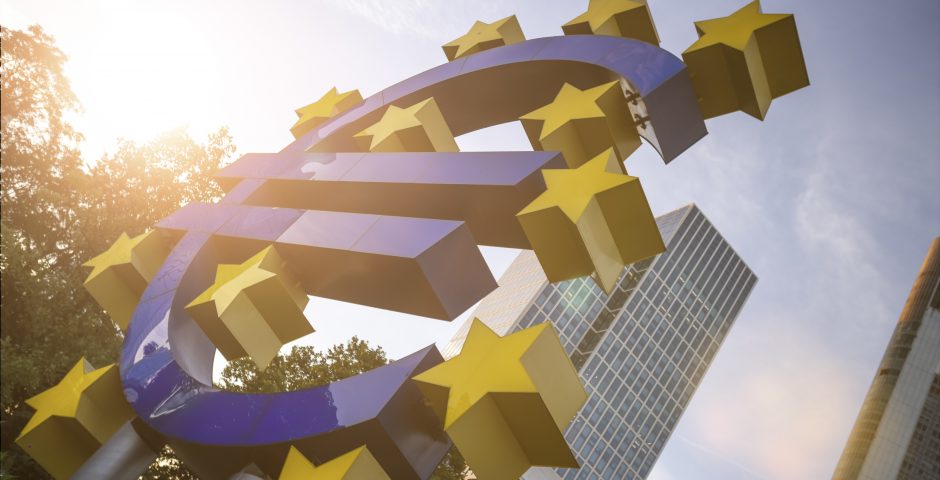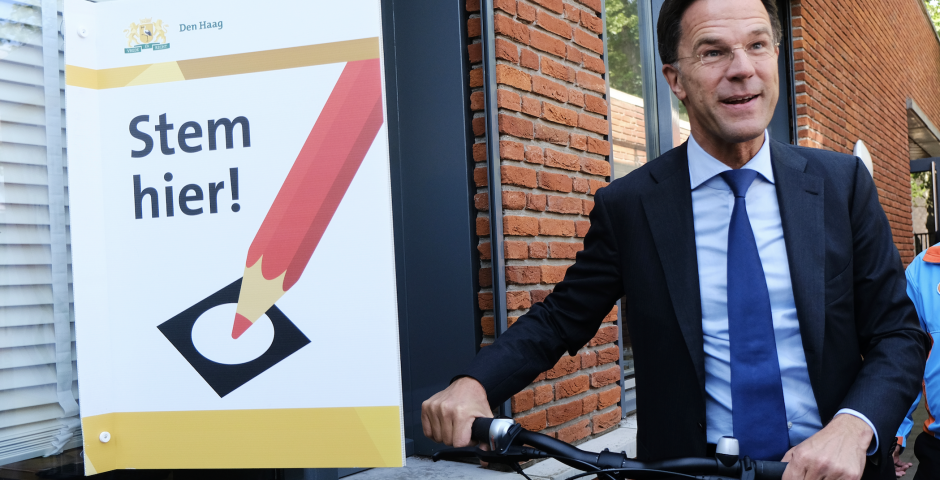The unthinkable reform of the Eurozone

Lessons from Jeroen Dijsselbloem’s “Euro Crisis – The Inside Story”.
With the Coronavirus spreading, besides the unfolding human tragedy, the economy is taking a hit as well. Business trips and meetings are being cancelled, and the stock market is already taking losses due to uncertainty. Is Europe’s single monetary union able to cope with the economic impact that Corona might have?
We can start by looking at how the Eurozone coped with the financial crisis of 2008, and the work done to strengthen the euro. Many economists call the 2008 financial crisis the worst since the Great Depression of the 1930s. What started with panic on Wall Street, was soon followed by a full blown global financial crisis with long lasting consequences.
In Europe, banks had to be saved with taxpayers’ money for billions of euros to avoid a complete implosion of the economy. The impact of the banking crisis on society was enormous, with many people losing their jobs. In Spain and Greece, youth unemployment still lingers around thirty procent, where it was twenty percent before the crisis. How has the Eurozone evolved since then?
Jeroen Dijsselbloem, former Dutch Minister of Finance, presided over the Eurogroup during the financial crisis of 2008, and wrote a book about how he experienced those troubling days. In “The Euro Crisis – The Inside Story” the former Minister not only provides an overview of the important steps taken to make the Eurozone more robust.
He also gives a fascinating insight into the decision-making process in the midst of the crisis. Furthermore, he leaves recommendations on how to make the Eurozone even more resilient and able to deal with new economic shocks.
From bail-outs…
Dijselbloem describes how the world of banks in Europe was dramatically transformed because of the financial crisis. Before the downturn, banks and national governments were heavily interdependent. A bank that risked going bankrupt required the financial support of the state in order to survive. Governments would provide this support in fear of further escalation and panic, such as bank runs.
The billions paid by governments with taxpayers money may have been needed to avoid worse from happening, but national debt increased accordingly. This was upsetting to many, as banks were considered “too big to fail” and therefore would always be rescued, even when they had obviously failed. And citizens were paying the price.
To break this cycle, the euro countries managed to agree on a system where big banks are no longer recapitalised by national governments, but by the European Stability Mechanism (ESM) in Luxembourg. The ESM provides financial assistance in the form of loans as new capital to banks in difficulty, and is funded and backed by the euro member countries.
Importantly, the biggest banks were placed under European supervision, and any support would come with strict conditions.
To bail-ins…
Possibly an even bigger paradigm shift was that private investors were going to bail-in when banks get in trouble, meaning they were going to be taking losses. Before, governments thought bail-ins would deter investors, especially as the banks weren’t very healthy in the first place. And investors turning away would mean further contagion of the banking crisis.
However, the consensus shifted towards the idea that, like anywhere else, investment in banks comes with risk. The implicit guarantee that governments would always step in when things get ugly, had to go. Investor trust could be upheld through new buffer capital requirements for banks, European supervision and support from the ESM where appropriate.
Furthermore, banks needed to pay into their own Resolution Fund, meant to facilitate a supervised rescue of failing banks rather than to provide blunt recapitalisation. The Banking Union was completed with banks contributing to the European Deposit Insurance Scheme, guaranteeing that private saving accounts were insured up to 100.000 euro.
Optimal Currency Area
Despite all the work done, the structure supporting the Euro is not fully built yet. Where pessimistic critics think the Eurozone is doomed because of its flaws, Dijsselbloem identifies himself in his book as an optimist. He favours an approach of small and well thought-out steps forward. According to the former politician, creating a full-fledged political union would not be required to make the Euro a success.
To explain what still needs to happen, Dijsselbloem refers to Canadian economist and Nobel Prize winner Robert Mundell’s theory on optimal currency areas. According to Mundell, the decision to join a single currency depends on three factors. Those being the possibility for labour and capital to move within the currency area, a country’s flexibility to correct prices and wages, and a mechanism for financial transfers.
Free movement of labour makes sure that people can move to other countries within the currency area with more job opportunities, which relieves countries with high unemployment. The flexibility to correct prices and wages is partly related to the competitiveness of countries, and partly to government pricing policies.
In a country with high wages but low competitiveness, a lowering of wages will improve competitiveness. The newly established competitiveness will over time lead to more economic activity and recovery, also allowing labour and capital to move back.
Transfer mechanism
Lastly, financial transfers would be required in a currency zone to compensate for potential negative effects of the common currency. According to Dijsselbloem, this transfer mechanism has largely been created in the EU by making private investors the first to take losses when banks fail.
In addition, public transfers already take place through the progressive contribution system to the EU’s budget. Wealthy Member States pay relatively more into the EU budget than their peers with lower GDP. Furthermore, financial resources are redistributed through the European Structural and Investment Funds, which are tasked with job creation and a sustainable European economy.
In addition to what’s already in place, Dijsselbloem suggests that the ESM could, under condition of reforms, provide loans to Member States already when they are in recession. Currently the ESM provides loans only when countries are near bankruptcy. The former finance minister prefers loans over subsidies, in order to avoid the moral hazard of governments counting on support even though they haven’t been acting responsibly.
Capital Markets Union
For Dijsselbloem, completing the Banking Union and the creation of an integrated capital market are the priority areas to make the Eurozone shock proof. Regarding the Banking Union, remaining concentrations of risk should be cleared, and the balances of banks should be further strengthened. Risks should be fully covered by private investors and banks themselves, where taxpayers should be fully protected.
Dijsselbloem mentions the completion of the internal capital market as a last element to a more robust Eurozone. Despite the progress achieved in liberalising capital and payment flows in the EU, capital markets have remained largely fragmented.
According to the European Commission, small businesses in Europe receive five times less funding from capital markets than in the US. European businesses should become less dependent on banks for investment, and receive more funding from venture capital.
The Commission’s plans for a Capital Markets Union should move the EU closer towards a situation where small businesses can raise financing as easily as large companies. Obtaining financing through capital markets should be increasingly straightforward. Seeking funding in another Member State should not be impeded by unnecessary barriers.
Economic shock
Has the Eurozone done enough work to be able to cope with a potential heavy economic shock caused by the Coronavirus? Most of the fundamental work has been done in the aftermath of the financial crisis of 2008. The chances of European banks having to be saved with taxpayers money has been significantly reduced, and the new financial buffers of banks should help.
However, the heavy reliance of European businesses on financing from banks might cause problems once again. When businesses go bankrupt because of the Coronavirus fallout, banks will have to take these losses first, adding pressure to their balances. And leaving them with less money to invest in new initiatives when the economy attracts again.
Having a strong single capital market would make the Eurozone’s economy much more resilient. After an economic shock, venture capitalists would then have to take a bigger share of the losses, but the economy should be reactivated much quicker.
Political Union
Dijsselbloem’s book gives great insight from within the eye of the storm of the Euro crisis. He openly gives his take on some of the very high-stake conversations he had with key figures such as German finance minister Schäuble and the Greek minister Varoufakis. He takes the reader along the most crucial moments, where he helped lead the Eurozone and possibly even the EU’s unity away from the cliff edge.
In terms of his ideas for the Eurozone, Dijsselbloem prefers a step-by-step approach to finish the work that was started in the aftermath of the financial crisis. He does not believe a European Minister of Finance, tax and spending capabilities for the EU or Eurobonds would be necessary to make the Eurozone a credible and robust currency union. But of course that does not mean that these ideas do not merit further discussion.





Wat een interessant artikel Thomas!